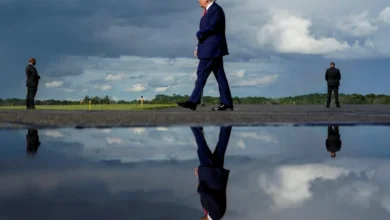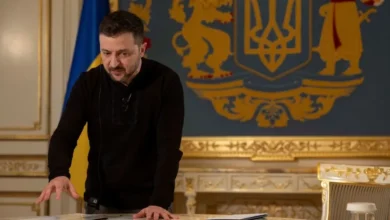The humble South African shoe that Hollywood A-listers, British royals love

In August 2016, Nick Dreyer packed up his failing art dealership in Johannesburg and decided to head back to his native Cape Town. To pass the time on the long drive home, he called his old school buddy Ross Zondagh, who just happened to be going through business struggles of his own. Over the course of the next five hours, the friends chatted about everything from the Springboks’ dismal performances on the rugby field that year (how times have changed), to the opening ceremony of the Rio Olympics, which had taken place a couple of weeks earlier.
“We were both really disappointed by the outfits our athletes were wearing,” Zondagh tells Al Jazeera on a visit to a repurposed fish factory near Cape Town’s port precinct. “The Nigerians felt Nigerian, the Americans felt American, … but the South Africans could have been from anywhere.”“We started talking about how we could improve the uniform,” Dreyer says in the duo’s shared office in the vibey headquarters of Veldskoen, the shoe manufacturer that emerged from that conversation between Dreyer and Zondagh. The office features plush armchairs, an orange mountain bike and a pile of timber in the corner.A couple of days later, the friends got to work on an online shop. After their kids had gone to bed each evening, they would connect via Skype and spend a few hours trying to teach themselves how to build a website. “It wasn’t really about the shoe,” Zondagh remembers. “We were just keen to find out whether we could sell something – anything – online.”
‘There’s money in my bank account’
Within about three weeks, they had a “really crappy” website, they say, to show for their efforts. The only item in the shop? The hastily Photoshopped mock-up they had been sent on Day 1. “It was rubbish,” Dreyer laughs. “But we were just playing around. No one was going to actually look at the site.”
Next, Dreyer started to tinker with Facebook marketing – a relatively unexplored medium back then. He quickly put together an ad with the tagline “The Legend Is Back” and, without even telling Zondagh, made it live. “There was no way anyone was going to care,” he says. “We didn’t even have a shoe.”
Imagine his shock when, about 10 days later, an agitated Zondagh called him. “Nick, there’s money in my account!” he gasped. “Seventy-five grand [$4,300]!” Unbeknownst to them, Dreyer’s Facebook campaign had driven 120 people from all over South Africa to access the online shop and buy their imaginary shoes.
Their initial response was panic. They took the website down and tried to find someone to make the shoes for them. “Everyone we spoke to told us to go to China,” Zondagh says. “But we were never going to do that. It’s a South African product. It has to be made in South Africa.” Eventually they found a Cape Town shoemaker who agreed to help them out. “We contacted everyone who’d bought shoes and said, ‘Sorry, we made a mistake. Our site wasn’t meant to be live,’” Dreyer remembers. They warned each customer that they’d have to wait from three to eight months for their shoes, but only 15 percent of them asked for a refund.










